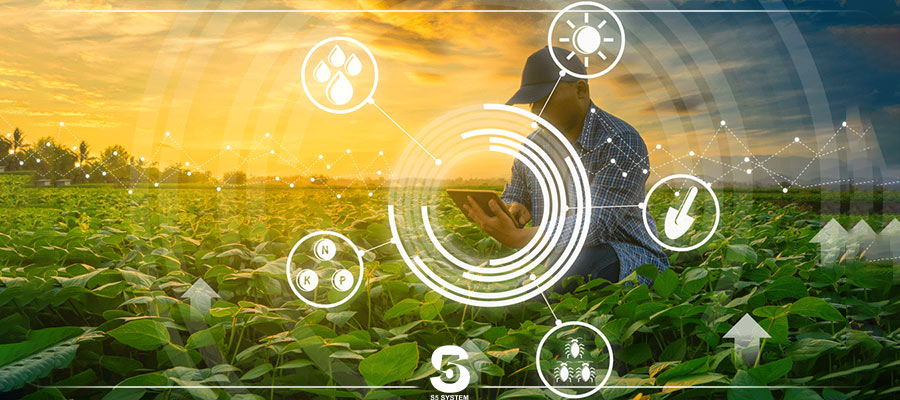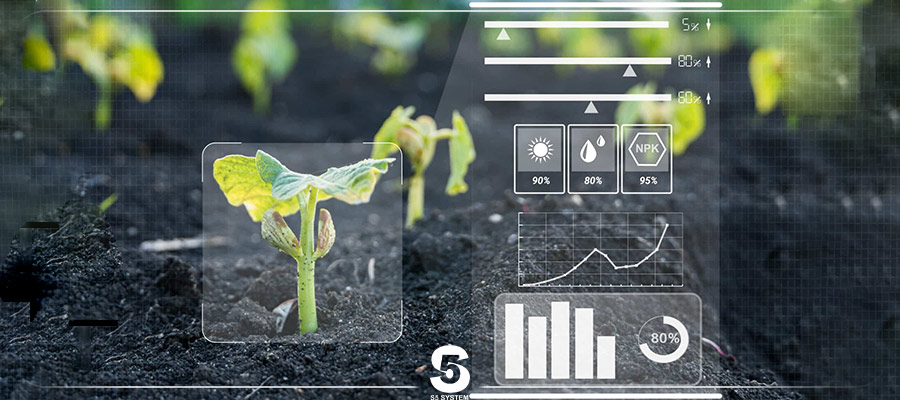How IoT Contributes to Sustainable Agriculture
Every April 22nd is Earth Day which marks a celebration of our planet, the importance of reducing individual carbon footprints, and keeping human activity ecologically balanced with the environment. While the concept of sustainable agriculture has existed for decades, it has become more relevant as farmers and agribusinesses begin focusing on ways to improve efficiency and optimize production. Here’s a look at how IoT is helping pave the way for more sustainable farming.
Rise of Sustainable Agriculture
Plants need fertile soil with a balanced level of minerals and frequent watering for optimal growth. The key for transforming to more efficient farming practices is installing smart sensors in fields to detect crop conditions. This real-time data can alert farmers when cultivation problems occur relating to temperature, humidity, and other environmental factors that affect plant health. By knowing the level of moisture and nutrients already in the ground, farmers can coordinate fieldwork and distribute resources with as little waste as possible. The practice of sustainable agriculture coupled with IoT sensor technology provides solutions that save both time and money.Issues and Challenges to Feed a Growing Population
Even though the agricultural industry feeds the world, it has also contributed to climate change due to emissions from farm equipment that releases carbon dioxide into the atmosphere. Additional farming activities such as the application of pesticides and distribution of synthetic fertilizers also contributes to man-made nitrous oxide emissions. Other challenges facing farmers due to climate changes have to do with drought conditions and the creation of heat tolerance crops. One result of research and development for dealing with this issue has produced drought-tolerant corn, which helps minimizes crop losses.
Land Limitations
Only so much land is available for agricultural purposes and what exists must be protected to ensure the soil remains viable and free of contaminants. Smart technology has solutions for both of these issues through the ability to detect the presence of unwanted chemicals in the ground, as well as monitoring for the favorable conditions that lead to improved crop yields.Digital Evolution of Agriculture
As a fast-growing technological solution, digitization of agriculture is attracting big investors. AgTech startups, for example, raised $4.7 billion in 2019 after a 370 percent growth rate over six years. While this growth might not get much media coverage, it reflects widespread expansion of startups in the agricultural industry aimed at sustainability. [wbcr_php_snippet id=”4135″ title=”post_link_1″] 14 Ways IoT is Impacting the Food & Agriculture IndustryIoT and Sustainable Farming
Smart Irrigation – The use of IoT sensors in crop fields allows for more efficient water distribution, reducing wasted water. Farming equipment manufacturer John Deere has created machine data as a service to supplement its tractors used for irrigation, along with spraying and harvesting. Drone Assistance – Drones can be used in farming to monitor and gather data on crops from the air. Because farmers have so much land to cover, drones can help alleviate the need for time consuming surveys by foot. Agricultural drones can use advanced image data analytics to identify problems with irrigation, pest infestation, and soil variation. Greener Greenhouses – Modern greenhouses can be made greener by using solar power and sensors that monitor temperature, humidity, energy, and water consumption. The use of these smart devices will lead to greater conservation of resources in a more eco-friendly manner. Big Data – At the core of digital transformation is the ability to collect data generated by RFID sensors placed throughout a field. As crops are harvested, irrigation water can be continuously tested with sensors to determine if it is free from E. coli and other contaminants. This tracking may contribute to reducing the number of illnesses caused by foodborne pathogens.
Future of Digitized Agriculture
The use of IoT technology in agriculture will increase as farming embraces smart technology to monitor, protect, and expand crop yields. The implementation of precision agriculture has the ability to positively impact many facets of traditional farming. All over the world, farms will benefit from processes that help reduce waste and preserve resources.Conclusion
Digital transformation is creating a clear path for sustainable agriculture, which will play an increasingly important role in making food production more efficient with less damage to the environment. The shift towards more data-centric methods with the ability to make adjustments in real-time empowers farmers to revolutionize their methods to be able to do more with less.Related Links:


